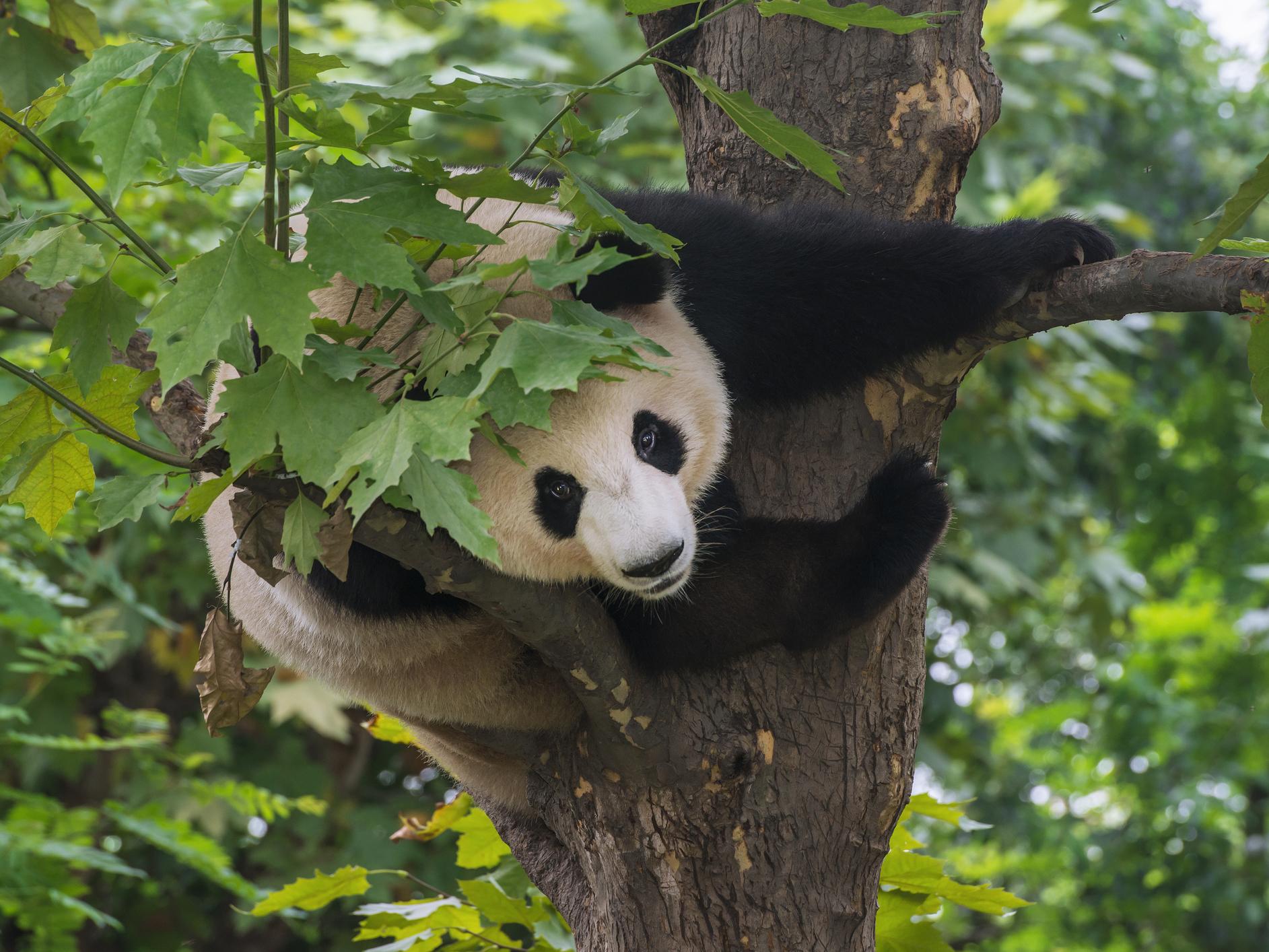Panda conservation brings in environmental benefits worth billions every year
Study accounting for value of services to local people, environment and culture found reserves for popular bears generated 20 times as much cash as cost to maintain them

Your support helps us to tell the story
From reproductive rights to climate change to Big Tech, The Independent is on the ground when the story is developing. Whether it's investigating the financials of Elon Musk's pro-Trump PAC or producing our latest documentary, 'The A Word', which shines a light on the American women fighting for reproductive rights, we know how important it is to parse out the facts from the messaging.
At such a critical moment in US history, we need reporters on the ground. Your donation allows us to keep sending journalists to speak to both sides of the story.
The Independent is trusted by Americans across the entire political spectrum. And unlike many other quality news outlets, we choose not to lock Americans out of our reporting and analysis with paywalls. We believe quality journalism should be available to everyone, paid for by those who can afford it.
Your support makes all the difference.Efforts to save giant pandas from extinction bring in far more money than they cost, according to a new Chinese-led study.
By protecting panda reserves, China is generating up to $7bn (£5.35bn) in benefits such as carbon storage and the provision of useful resources – 27 times as much as it costs to maintain those reserves.
According to researchers, the huge return on investment suggests panda protection expansion is required, despite criticism from some in the conservation community.
Regardless of the panda's popularity, critics have pointed to the limited success of breeding programmes and the vast sums of money pumped into their preservation.
Crucially, they argue these funds would be better spent protecting other creatures that do not have the same mass appeal.
Naturalist and television presenter Chris Packham famously declared he would happily “eat the last panda” if he could recoup the money spent on their conservation to spend on “more sensible things”.
However, others have argued that pandas are more than the sum of its parts, and that these large bears are an “umbrella species” whose preservation can have far-reaching effects.
In the new analysis, carried out by a large international team and partly funded by the Chinese Ministry of Science and Technology, researchers have attempted to value the services provided by pandas and their habitats.
“Many detractors have argued that spending valuable resources on panda conservation is wasteful,” said Dr Fuwen Wei of the Chinese Academy of Sciences, who led the research.
“Our analysis contradicts this view and demonstrates clearly the great value of the panda, both for its cultural and intrinsic value and for the ecosystem services provided by panda reserves.”
Between 1990 and 2010, China’s National Conservation Project for the Giant Panda and Its Habitat doubled panda habitat by establishing a total of 67 reserves across the nation.
To find out if this was all worth it, the scientists undertook a major piece on environmental accounting using a framework known as the Common International Classification of Ecosystem Services.
They factored in a range of economic contributions made by these reserves.
These included the services these rich habitats provide to local people such as land to graze animals, water supplies and useful plants, as well as environmental services such as the carbon and nutrients stored in the reserves’ greenery.
In addition, the scientists took the cultural value of pandas in these reserves into account, such as the use of panda images in branding and their importance in zoos around the world.
When they collated all this information, the researchers arrived at a figure of $562m (£430m) per year in 1980, which increased to between $2.6bn and $6.9bn (£2bn and £5.3bn) per year by 2010. These results were published in the journal Current Biology.
“Now, we know that the system of reserves and protections [for pandas] are working to reverse the panda’s decline and that these efforts have benefits for society and nature at large,” said Dr Wei.
“This should provide added motivation for people to continue backing panda conservation to bring about the eventual recovery of the species.”
Charlotte MacDonald, the Royal Zoological Society of Scotland’s director of conservation and living collections, agreed that it is vital to protect both pandas and the ecosystems they inhabit.
“As well as being a magnificent species in their own right, giant pandas are in many ways also a flagship for conservation, as safeguarding their habitats also helps to protect many other animals they live alongside, including golden snub nosed monkeys, takin and a huge variety of invertebrates," she said.
Last year pandas were reclassified as “vulnerable” rather than “endangered” thanks to the success of conservation efforts, but they are still considered at high risk of extinction.
While vast areas have been opened up to protect the elusive animals, the fragmentation of their habitat as a result of human expansion has still placed many of the remaining population fragments under threat.
Join our commenting forum
Join thought-provoking conversations, follow other Independent readers and see their replies
Comments